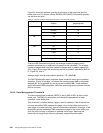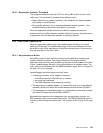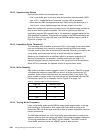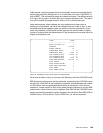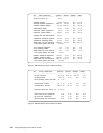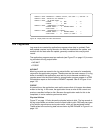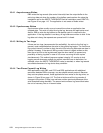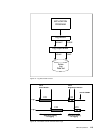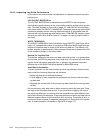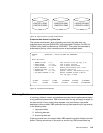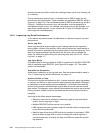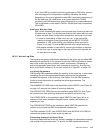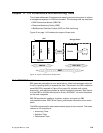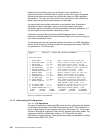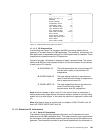114 Storage Management with DB2 for OS/390
10.4.5 Improving Log Write Performance
In this section we present some considerations on choices to improve log write
performance.
LOG OUTPUT BUFFER Size
The OUTPUT BUFFER field of installation panel DSNTIPL lets the system
administrator specify the size of the output buffer used for writing active log data
sets. This field is shown in Figure 40 on page 115. With DB2 V6, the maximum
size of this buffer (OUTBUFF) is 400000 KB. Choose as large a size as the MVS
system can support without incurring additional paging. A large buffer size will
improve both log read and log write performance. If the DB2 PM statistics report
shows a non-zero value for
B in Figure 41 on page 118, the log output buffer is
too small.
WRITE THRESHOLD
The WRITE THRESHOLD field of installation panel DSNTIPL (see Figure 40 on
page 115) indicates the number of contiguous 4KB output buffer pages that are
allowed to fill before data is written to the active log data set. The default is 20
buffers, and this is recommended. Never choose a value that is greater than 20%
of the number of buffers in the output buffer.
Devices for Log Data Sets
The devices assigned to the active log data sets must be fast. In a transactional
environment, the DB2 log may have a very high write I/O rate and will have direct
impact on the transaction response time. In general, log data sets can make
effective use of the DASD Fast Write feature of IBM's 3990 cache.
Avoid Device Contention
To avoid contention on the disks containing active log data sets, place the data
sets so that the following objectives are achieved:
• Define log data set on dedicated volumes
• If dual logging is used, separate the access path for primary and secondary
log data sets
• Separate the access path of the primary log data sets from the next log data
set pair
Do not place any other data sets on disks containing active log data sets. Place
the copy of the bootstrap data set and, if using dual active logging, the copy of
the active log data sets, on volumes that are accessible on a path different from
that of their primary counterparts. Place sequential sets of active log data sets on
different access paths to avoid contention while archiving. To achieve all this, a
minimum of three volumes on separate access paths is required for the log data
sets. A simple example is illustrated in Figure 39 on page 115.



